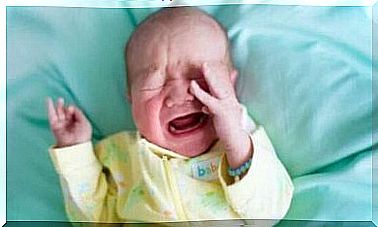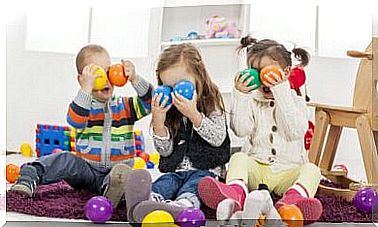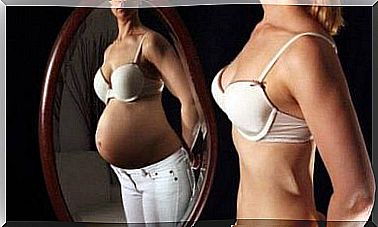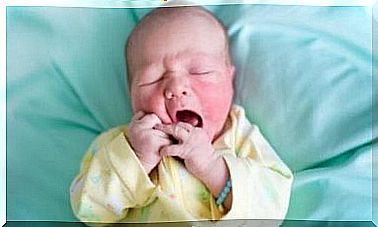Properties And Functions Of The Umbilical Cord
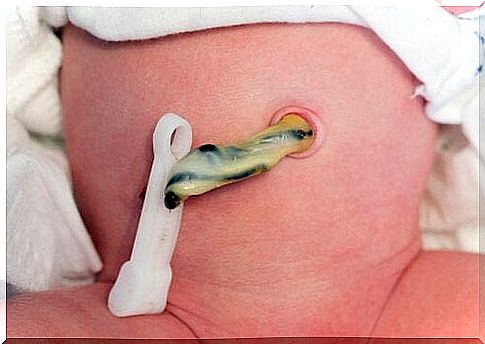
The functions of the umbilical cord play a key role in the development of the fetus. The umbilical cord supplies your baby’s blood with nutrients and oxygen.
The functions of the umbilical cord are so important that many parents are storing the blood from the baby’s umbilical cord for possible future stem cell therapies.
The umbilical cord is the basis for the development of the fetus
The length of the umbilical cord is about 30 to 60 centimeters. It is spiral-shaped – like an old telephone cable – and usually has between 10 and 12 turns.
The umbilical cord has two umbilical arteries and one umbilical vein. There is a type of tissue in the umbilical cord called Wharton’s jelly.
This loose, gel-like connective tissue gives the umbilical cord stability and prevents it from becoming tangled.
The two arteries and the vein are arranged in a triangle; the arteries form the base and the vein form the third part of the triangle.
The umbilical cord forms between the fourth and eighth week of pregnancy. After your child is born, doctors cut the umbilical cord, which leaves a permanent scar: the belly button.
Together with the rejection of the placenta from the uterus, this reflects the transience of these organs. Both are formed to perform a specific and temporary function. Once fulfilled, the organs are rejected.
As long as your baby is in your womb, the umbilical cord is its only source of food, blood, and its need for oxygen. It forms a connection between the mother’s placenta and the fetus’ belly button.
Due to the above-mentioned functions of the umbilical cord, it is essential for embryonic development.
In the umbilical cord, the connection between mother and child is also expressed physically to the maximum. For this and many other reasons, mothers are a cornerstone of their children’s lives.
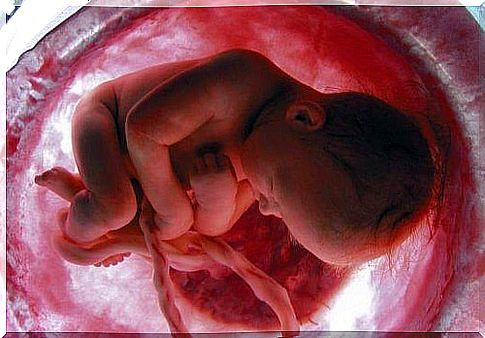
Functions of the umbilical cord
- Nutrition: The umbilical cord carries food from the mother placenta to the fetus.
- Breathing: The task of the umbilical cord is to carry oxygen-rich blood to the fetus.
- Excretion: The carbon dioxide released by breathing and food waste are excreted through the umbilical cord.
- High stem cell content: Embryonic stem cells are undifferentiated cells, so they can transform into any type of cell. They can become skin cells, nerve tissue, or the cells that make up the heart, kidneys, and so on. When stored, stem cells can be used to treat diseases such as childhood leukemia, spinal cord injuries or heart problems.
- The transport of antibodies: Towards the end of pregnancy, the mother transports the antibodies formed in her body to the fetus. These antibodies help develop the baby’s immune system.
- Preventing Various Diseases: According to a report in Genome Biology, analysis of umbilical cord cells from premature babies can help diagnose severe lung conditions such as bronchopulmonary dysplasia.
As you can see, the functions of the umbilical cord are not just a fundamental part of creating new life. They can save lives too.
The donation of umbilical cord blood is a painless process and can be carried out immediately after the birth.
How do you care for the umbilical cord?
There are many uncertainties surrounding how to care for the umbilical cord after having a baby. Let’s look at a few:
When is the right time to cut the umbilical cord? Traditionally, medical professionals cut the umbilical cord immediately after a baby was born.
However, the World Health Organization and other research institutes suggest waiting between 30 and 120 seconds before cutting.
This will reduce the risk that the child will need a blood transfer or have a ventricular hemorrhage.
However, if you plan to donate cord blood, the cord must be cut immediately.
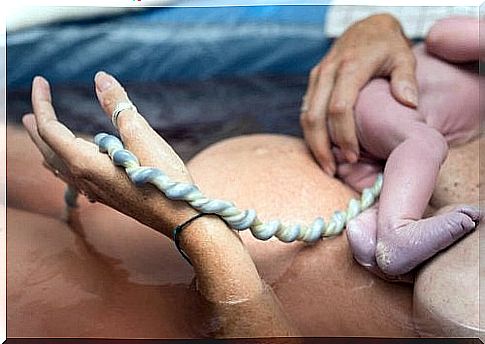
How do you care for a newborn’s umbilical cord? The part of the umbilical cord that remains attached to your child’s navel dries out in a few days and falls off.
This usually happens on the first or second day of life. In the meantime, you should clean the area with 70% isopropyl alcohol and sterile gauze.
According to recent studies, caring for a newborn’s umbilical cord with these agents is not absolutely necessary. You can also just keep the area dry.
However, in environments with a high risk of infection, this cleaning can reduce the risk of infection.
Can I bathe my newborn child? Yes, you can, but you must always carefully dry the umbilical cord and the surrounding area afterwards.
How can I be sure that everything is okay? If you notice the umbilical cord looking strange, smelling strange, bleeding, or wet, talk to your pediatrician.
Very small bleeding (dots or small spots) is normal, but the doctor should be advised of larger amounts. He or she may prescribe antibiotics to prevent infection.
